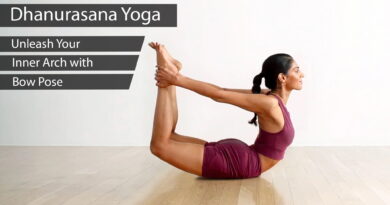Paripurna Navasana Yoga Benefits, Steps and Precautions
Table of Contents
Introduction
In this blog post, we’ll explore the Paripurna Navasana Yoga benefits, background, and step-by-step instructions, address common questions, and conclude with why Paripurna Navasana is a valuable addition to your yoga practice.
In the vast world of yoga, there are countless postures that offer a wide range of benefits for both the body and mind. Today, we’re going to dive into the incredible Paripurna Navasana Yoga, also known as Boat Pose. This challenging yet empowering asana has become a beloved part of many yoga sequences, renowned for its ability to engage the core, improve balance, and cultivate inner strength.
Background
Paripurna Navasana originates from Hatha Yoga, an ancient practice that weaves together physical postures (asanas), breath control (pranayama), and meditation. The term “paripurna” translates to “complete” or “full,” while “navasana” means “boat pose” in Sanskrit. This pose has a long-standing tradition of activating the Manipura Chakra, associated with personal power and self-confidence.
Paripurna Navasana Yoga Benefits
Paripurna Navasana Yoga offers a treasure trove of benefits that can positively impact your physical and mental well-being. Let’s explore these benefits in simple language:
1. Core Strength
Paripurna Navasana is a powerhouse for strengthening your abdominal muscles, including the rectus abdominis and transverse abdominis. It helps to tone and sculpt your core, providing a solid foundation for your entire body.
2. Balance and Stability
As you find your balance in Boat Pose, you’ll discover an enhanced sense of stability. Balancing on your sitting bones and keeping your legs lifted challenges your body’s proprioception, improving your awareness of your position in space.
3. Improved Digestion
By compressing the abdominal area, Paripurna Navasana stimulates the digestive organs, including the stomach and intestines. This can aid digestion, relieve constipation, and promote better overall gut health.
4. Strengthened Spine and Hip Flexors
Engaging your spinal erectors and hip flexor muscles in Paripurna Navasana strengthens your spine and improves posture. It can also alleviate lower back pain and increase flexibility in the hips.
Steps to Practice Paripurna Navasana Yoga
Now, let’s break down the steps to practice Paripurna Navasana Yoga in a humanized and approachable manner:
1. Begin by sitting comfortably on your yoga mat with your legs extended in front of you.
2. Bend your knees, planting your feet firmly on the ground, keeping them hip-width apart.
3. Place your hands on the mat a little behind your hips, with your fingers pointing towards your feet.
4. Take a moment to lengthen your spine, sitting tall and activating your core muscles.
5. Lean back slightly, shifting your weight onto your sitting bones.
6. Lift your feet off the ground, bringing your shins parallel to the mat.
7. If it feels accessible to you, slowly straighten your legs, creating a V-shape with your body. If straightening your legs is challenging, it’s perfectly alright to keep your knees bent as you work on building strength.
8. Extend your arms forward, parallel to the ground, with your palms facing downwards.
9. Maintain a steady breath and keep your gaze forward, focusing on a point ahead of you.
10. Hold the pose for about 20-30 seconds initially, gradually increasing the duration as you develop strength and stability.
11. When you’re ready to release the pose, exhale and lower your feet and torso back to the mat.

FAQs about Paripurna Navasana Yoga
Now, let’s address some common questions that may arise regarding Paripurna Navasana.
Q1. Can I practice Paripurna Navasana if I’m a beginner or have limited flexibility?
Absolutely! Paripurna Navasana Yoga can be modified to suit your level of flexibility and strength. You can start by keeping your knees bent and gradually work towards straightening your legs as you progress. Remember, it’s important to listen to your body and not push beyond your limits.
Q2. What if I can’t lift my feet off the ground in Boat Pose?
If lifting your feet off the ground feels challenging, you can use props like yoga blocks or place your hands behind your thighs to support your legs. This modification allows you to engage your core and work on building strength until you’re ready to lift your feet.
Q3. How long should I hold Paripurna Navasana?
As a beginner, start by holding the pose for about 20-30 seconds. Over time, as your strength increases, you can gradually extend the duration. Remember to focus on maintaining proper alignment and breathing steadily throughout the pose.
Q4. Can Paripurna Navasana help with weight loss?
While Paripurna Navasana engages and strengthens the core muscles, it’s important to note that isolated exercises alone don’t guarantee weight loss. However, regular practice of Paripurna Navasana, along with a well-rounded fitness routine and a balanced diet, can contribute to overall weight management and toning of the abdominal muscles.
Q5. Are there any contraindications or precautions for practicing Boat Pose?
If you have any pre-existing medical conditions such as recent abdominal surgery, hernia, or pregnancy, it’s advisable to consult with a healthcare professional before attempting Paripurna Navasana. They can provide personalized guidance based on your specific situation and ensure your safety during the practice.
Conclusion
Paripurna Navasana, or Boat Pose, is a remarkable asana that unlocks the potential for core strength, balance, and self-discovery. By incorporating this pose into your yoga practice, you’ll strengthen your core, improve balance, enhance digestion, and promote spinal health.
Remember to approach the pose with patience and listen to your body, modifying as necessary. If you have any concerns or pre-existing conditions, seeking guidance from a yoga teacher or healthcare professional is always recommended. Embark on your yoga journey and embrace the transformative power of Paripurna Navasana.





